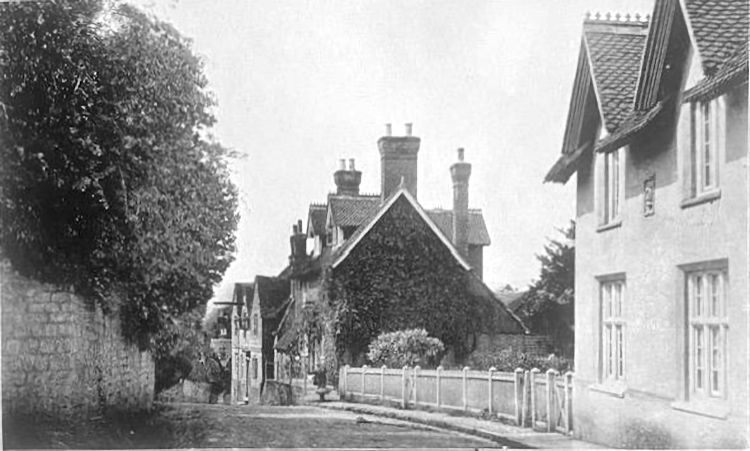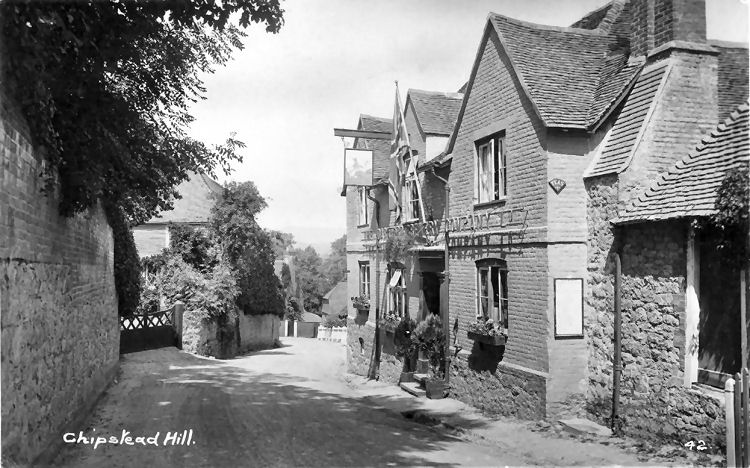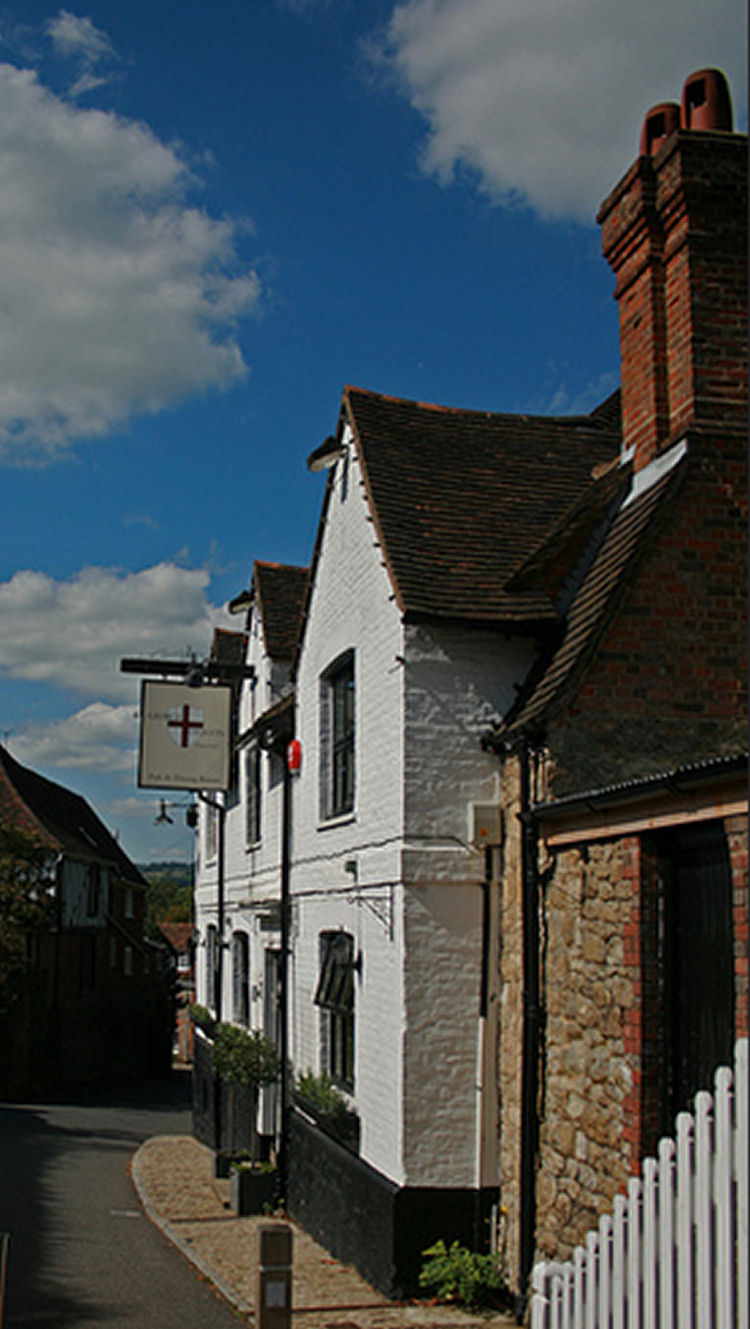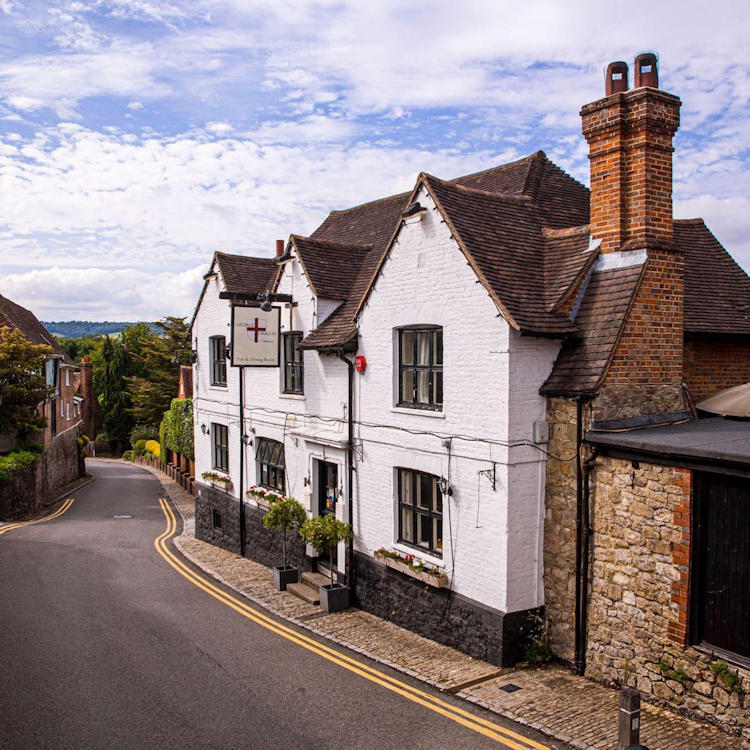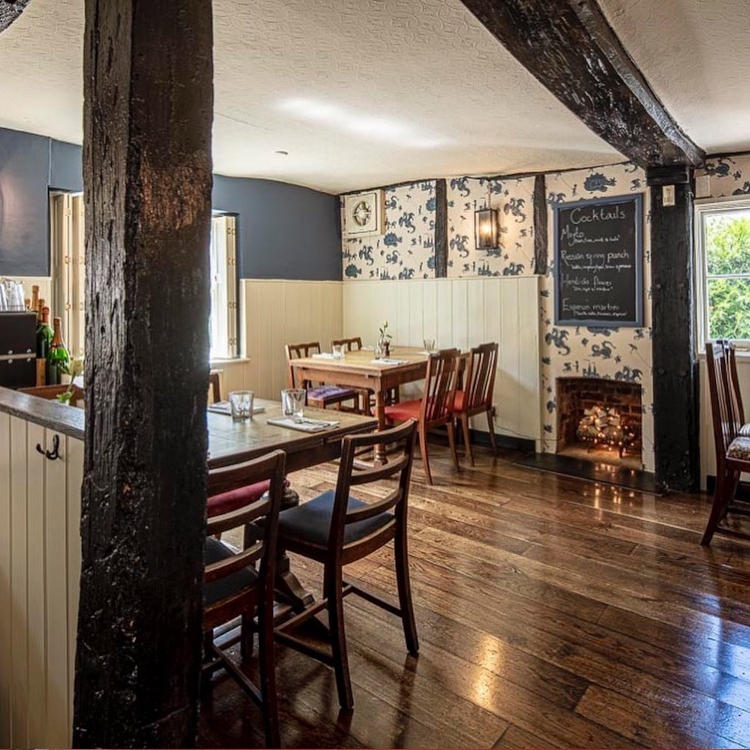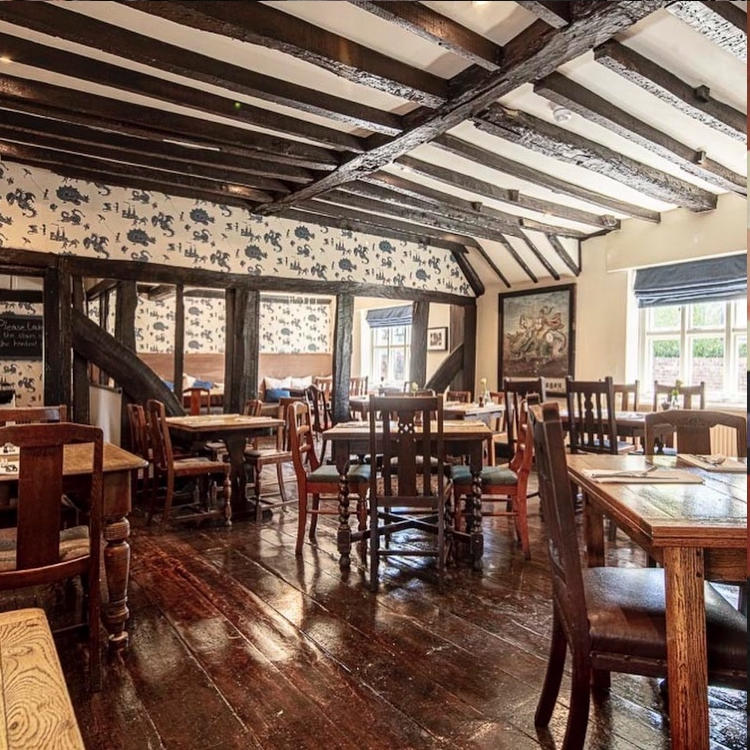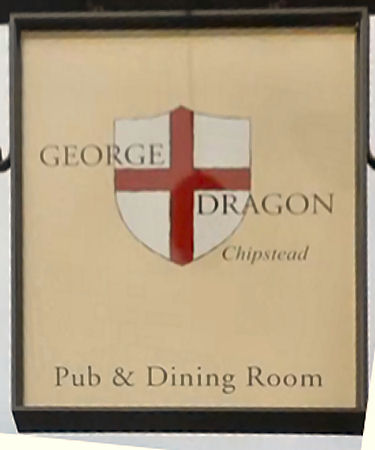|
Kent & Sussex Courier 06 November 1936.
"DEATH TRAP ROAD"
CAR VICTIM THOUGHT CHIPSTEAD HIGHWAY DANGEROUS.
Often called a "death trap" by Mr. Harry Bowater Monk, of the "George
and Dragon," Chipstead, the stretch of road between Dryhill and
Chipstead corner the scene of an accident which cost him his life and
was the subject of an inquiry conducted by Mr. A. H. Neve and a jury at
the Sevenoaks and Holmesdale Hospital on Friday.
Mr. Monk was run down by a car while walking home on the evening of
Thursday, October 22, from the Darenth River Ballast Co.'s pits at
Sundridge, of which he was manager. He died a week later in hospital.
Monk's age was given as 53 by John Gore, licensee of the "George and
Dragon," Chipstead, who said that Monk knew the spot well where he was
killed.
The Coroner:- Did he ever make any complaint about the road?
Gore:- He often said it was a death trap.
William Knight Richard Griffin, a commercial traveller, of 32, Quarry
Hill, Tonbridge was the driver of the vehicle which injured Monk. He
told the Coroner that at about 6.20 p.m. on October 22 he approached
Chipstead Corner from Sundridge at 30 miles per hour. Three hundred
yards past Bannister's nurseries he noticed the lights of an oncoming
vehicle. He had dimmed his lights and slowed to 15 miles per hour when
the other car came into sight, showing four headlights, and completely
dazzling him. He pulled up almost to a standstill.
COMPLETE BLACK OUT.
The Coroner:- Could you see anything at all?
Griffin: No, I was completely blacked out.
"I was travelling about two feet from the verge and did not see the man
until I had hit him," Griffin added.
The Coroner:- When you say you slowed down on being dazzled, what do you
mean your speed was. Was it five miles an hour?
Griffin:- Yes.
That is the walking speed of a man. Mr. Monk was walking. How do you
account for the fact that you overtook and knocked him down?
He must
have been going slower than I was.
How far ahead could you see? About 12 to 15 feet.
Was there any pedestrian in the road?
I did not see one.
As the approaching car came round the bend, did its lights show up the
pedestrian?
No.
Mr. T. H. Cassels (for Griffin):- Is it right that you have been driving
as a commercial traveller 25,000 miles a year since 1933 and have never
had an accident or been prosecuted?
Yes.
Further cross-examined by Mr. Cassells, Griffin said he pulled up as
soon as he could after hitting the man and sounded his horn to stop the
other car. He ex-changed names with its driver, who said he could not
stop because he had a train to catch.
"I DID NOT SEE HIM"
Mr. Lance House asked Griffin if he might have been wrong in saying the
approaching car had four lights.
Griffin:- "Yes. But they were dipped or dimmed at all."
If the car came round the corner and all four lights on, surely that
would have shown up the man?"
I did not see him.
Did you apply your brakes immediately you saw the car?
Yes.
Do you think that at five miles per hour with your brakes hard on or
fully applied you would run 12 feet before stopping.
Yes.
The Coroner:- Did you and the other driver have an argument about the
dipping of lights?
Yes, I told him he did not dip his lights and he
disputed that.
"Did he take you back to the car or did you go back?
No.
How he saw the man run down Griffin's car was described by Frank Dicker,
of Tanner's Lodge, Brasted, chauffeur to Mr. A. E. Scott Arnott. He was
the driver of the car whose head lights were alleged to have dazzled
Grifffin, and declared that he did dip his headlamps. His car had
reached the top of a hump before he did so, and it was probable that as
his car followed the curve it's lights flashed across at an angle and
blinded the other driver. He knew from personal observation that that
was so at that spot Griffin's speed was slow so far as he could judge.
After the argument about whether he had dipped or not, he took Griffin
back to his car and found the lamps in a dimmed position. He admitted
telling Griffin he could not wait because he had a train to catch.
SHOULD HAVE STOPPED
Dr. Kenneth Ward, of Brasted, said he found found Monk unconscious.
X-ray examination in hospital revealed that he had a badly fractured
skull. He had a bruises on the left shoulder which proved he must have
been walking fairly well out in the road, otherwise he would have
received the blow from the car on his right. That the skin on the
shoulder was not broken suggested he had been knocked over by a slow
moving vehicle and sustained his other injuries through contact with the
road surface. Dr. Ward added that he knew both the drivers concerned
were careful on the road.
Mr. Neve declared that he could not help feeling that Griffin made a
mistake in not stopping dead when he became blinded. To test the
accuracy of Griffins evidence the jury had to take into consideration
the dispute concerning the dimming of the lights. From Monk point of
view, he could not understand why he had not seen the lights of the car
behind him or heard some noise, the presence of Dicker's car might have
accounted for that.
Mr. W. Davies said the jury was satisfied that Monk's death was due to
accidental causes, but were of the opinion that something should be done
to make more safe the winding stretch of road upon which the accident
occurred.
|
